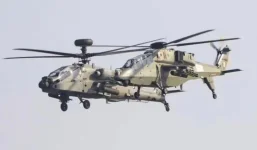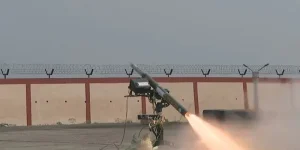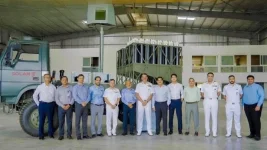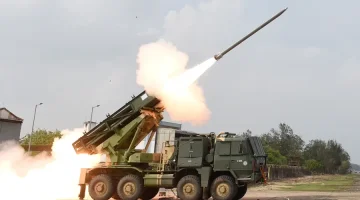The Indian Army is poised to significantly upgrade its battlefield surveillance capabilities with the introduction of an advanced Low Level Lightweight Radar (LLLWR) system.
This next-generation radar will feature cutting-edge gallium nitride (GaN)-based Active Electronically Scanned Array (AESA) technology, enhancing the military's ability to detect and track a wide array of modern, low-observable threats.
The decision to induct this improved radar follows the successful performance of the existing LLLWR, known as Aslesha Mk-I. This earlier version was developed by India's Defence Research and Development Organisation (DRDO) and produced by Bharat Electronics Limited (BEL).
The move towards the new GaN-AESA variant highlights India's ongoing efforts to bolster its tactical awareness on the battlefield and strengthen self-sufficiency in critical defence technologies.
The original Aslesha Mk-I radar is a 3D S-band system powered by batteries, specifically designed for effective surveillance at low altitudes, particularly in challenging mountainous regions. Over 1,400 units of the Aslesha Mk-I have been deployed by the Indian Air Force and the Army for battlefield reconnaissance.
A key advantage of this radar is its portability; weighing approximately 175 kg (excluding its power source), it can be transported by a small team of soldiers in three packs and made operational in less than five minutes.
This rapid deployment capability makes it highly suitable for dynamic tactical situations, enabling the detection and tracking of various aerial targets like fighter aircraft, helicopters, and Unmanned Aerial Vehicles (UAVs) at low and medium altitudes, even in adverse weather.
The forthcoming enhanced version, designated the Low Level Lightweight Radar (Improved) or LLLR(I), incorporates advanced GaN-based AESA technology. This represents a substantial improvement over the gallium arsenide (GaAs) technology used in previous systems.
GaN technology provides superior power efficiency, an extended detection range, better heat management, and increased resilience against electronic jamming attempts.
The LLLR(I) is a pulse-Doppler, software-defined radar that offers continuous 360-degree surveillance through four fixed phased-array antenna panels mounted on a tripod.
Its design features passive cooling and no mechanical moving parts or liquids, ensuring exceptional reliability and a long operational life between maintenance, making it robust enough for demanding battlefield conditions.
Key Advancements in the Next-Generation GaN-Based AESA Radar
The new LLLWR variant leverages the LLLR(I)'s foundation, integrating sophisticated GaN-AESA technology to offer superior performance against contemporary threats. Its notable features include:- Superior 3D Detection: The system utilises digital beam-forming and advanced digital signal processing (DSP). This allows for better filtering of ground clutter and mitigates signal reflection issues, ensuring reliable detection of targets with a small radar signature, such as drones and micro-UAVs.
- Continuous 360-Degree Surveillance: The fixed, four-panel AESA antenna design provides uninterrupted, all-around monitoring without the need for mechanical rotation. This enhances responsiveness and significantly reduces maintenance requirements.
- Enhanced Portability and Rapid Setup: Maintaining its lightweight and portable design, the radar can be quickly set up by infantry soldiers. It offers flexible mounting options on tripods, masts, towers, or vehicles, supporting both static and mobile operations at altitudes up to 5,000 meters above sea level.
- Versatile Multi-Mission Capability: Beyond aerial threats, the radar is optimised to detect and track a diverse range of targets, including crawling individuals, groups of personnel, and vehicles. An integrated advanced electro-optical system further allows for passive surveillance during both day and night, increasing its operational flexibility.
- Robust Electronic Counter-Countermeasures (ECCM): The GaN-AESA technology provides a low probability of intercept (LPI), making the radar difficult for adversaries to detect. It also offers strong resistance to electronic jamming. The radar's capability to rapidly change frequencies with each pulse and distribute these frequencies across a wide band enhances its survivability in electronically contested environments.
- Economical Surveillance Solution: The LLLWR is presented as a cost-effective system for ensuring perimeter security, suitable not only for military applications but also for safeguarding airports, industrial complexes, and other critical infrastructure. Its affordability and adaptability make it a viable option for the Indian Army, Border Security Force (BSF), and the Coast Guard.
Its software-defined architecture ensures that the system can be seamlessly upgraded to address new and evolving threats without requiring expensive hardware modifications, future-proofing this vital surveillance asset.




